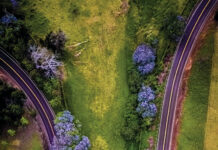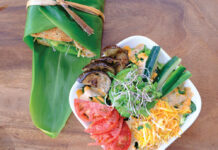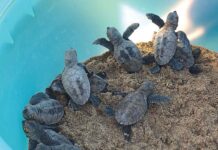Story by Judy Edwards, Rita Goldman and Teya Penniman | Photography by Nina Lee and Arna Johnson
Paul Higashino—Island CPR
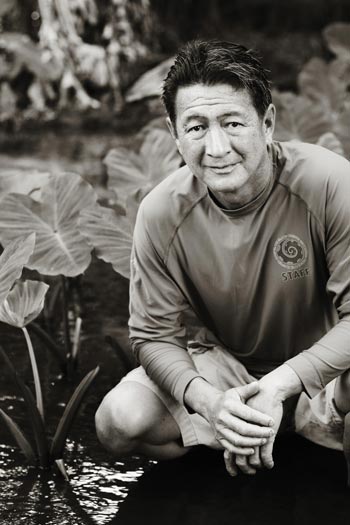 Paul Higashino has spent much of the last thirty-five years in Hawai‘i’s most remote wild lands. One of the state’s top naturalists, he has worked his way across the Hawaiian chain—from the drippy, mossy forests of the Alaka‘i Swamp on Kaua‘i to the wind-blasted red-dirt peak of Kaho‘olawe. Along the way, he has expanded our knowledge of native ecosystems, and just as often left a place better than he found it.
Paul Higashino has spent much of the last thirty-five years in Hawai‘i’s most remote wild lands. One of the state’s top naturalists, he has worked his way across the Hawaiian chain—from the drippy, mossy forests of the Alaka‘i Swamp on Kaua‘i to the wind-blasted red-dirt peak of Kaho‘olawe. Along the way, he has expanded our knowledge of native ecosystems, and just as often left a place better than he found it.
At Hawai‘i Volcanoes National Park, Higashino used systematic field trials to make conservation decisions. “Everyone has ideas,” he says. “You have to be able to back it up.” After nearly six years with the Park Service, Higashino wanted to take what he’d learned and apply it elsewhere.
“Elsewhere” was The Nature Conservancy’s Waikamoi Preserve; Paul became its first naturalist. Mark White, the Conservancy’s Maui program director, credits Higashino with shifting their focus. The preserve’s forest floor “was being rototilled by pigs,” White says. Higashi-no’s strategies decreased the damage by 90 percent.
In 1996, Higashino signed on with the Kaho‘olawe Island Reserve Commission (KIRC). His first mandate was to revegetate portions of the island—a daunting task, given its traumatic history. Ranching and hunting ventures had introduced goats, sheep and cattle; left to roam free, the animals denuded the landscape. Fifty years of live-fire target practice by the Navy had left huge areas with unexploded ordnance, even after the Hawaiian activist group Protect Kaho‘olawe ‘Ohana sued to stop the bombing and inspired a megamillion-dollar cleanup. Tons of soil were disappearing from the island every year. How do you create a native ecosystem from such devastation?
Try the kipuka strategy. A kipuka is a place that differs from the norm—a calm spot in rough seas, a pocket of pristine forest amid recent lava flows. It takes a trained eye to recognize a kipuka, an inspired restoration manager to create them.
Higashino and his team brought in native plant stock from Moloka‘i. They tinkered with irrigation systems and placed bales of pili grass around new plantings to keep precious moisture where it needed to be—creating kipuka in a sea of dry red dirt. Plant survival ballooned from 5 to 80 percent. Soil erosion dropped markedly in planted areas.
Higashino deflects credit for the success. “It’s the team, those in the KIRC office, Protect Kaho‘olawe ‘Ohana, the volunteer groups, the efforts of those who came before.” The three- to four-year waiting list for volunteers is more evidence he’s doing something right.
What’s most gratifying to Higashino after fifteen years on Kaho‘olawe? “Seeing the seedlings coming up from what we planted. Entomologists finding native insects. Seeing everyone working together to get the job done.”
Higashino is a man who’d rather talk about strategies and teamwork than his own accomplishments. A kipuka—something different from the norm: an environmental hero.—Teya Penniman
Kaho‘olawe Island Reserve Commission
(808) 243-5020
http://kahoolawe.hawaii.gov
Lori Buchanan—Local Authority
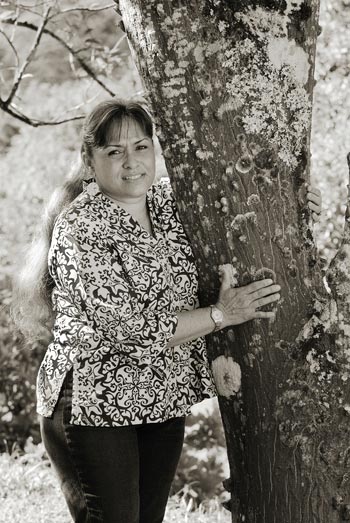 Monday: Fly to Honolulu to warn legislators about new alien species. Tuesday: Head into the brush. Wednesday: Find a home for the turtle that just got dropped off on my desk.
Monday: Fly to Honolulu to warn legislators about new alien species. Tuesday: Head into the brush. Wednesday: Find a home for the turtle that just got dropped off on my desk.
It’s the start of a typical workweek for Lori Buchanan. As head of the Moloka‘i branch of the Maui Invasive Species Committee (MoMISC), she’s charged with keeping alien plants and animals from overwhelming the island’s native species. It’s a challenge “Auntie Lori” embraces. She grew up loving the outdoors, and thought of working in horticulture, but raising eight kids left little time for a career. One day she helped chaperone students on a Nature Conservancy hike. It changed her life.
“The whole way, I was talking with a docent who had moved here from Canada,” she recalls. “Later, I thought, This Canadian is telling me about my forest, and I was born and raised here.”
Lori called The Nature Conservancy and asked to be trained as a docent. She volunteered in the field on weed control.
“Volunteering gets you in trouble,” Lori laughs. When the opportunity arose for Moloka‘i to have its own Invasive Species Committee, Lori’s mentor encouraged her to apply for the coordinator’s position. Lori got the job.
She hasn’t let it go to her head. For one thing, MoMISC has only one other full-time employee, field technician Kamalani Pali, and no office of its own—Lori’s desk sits in a corner of The Nature Conservancy’s Moloka‘i headquarters. But if her organization is small, its responsibilities are enormous.
“Federal agencies deal with national parks, the State with state lands, conservancies with conservation easements. MoMISC can go anywhere in response to alien species.
“It’s also a curse,” she laughs. “You get calls for everything. There’s no state Department of Agriculture inspectors on Moloka‘i. So we get those calls, everything from ants to strange trees to worms to floating fluorescent things in the water. People drop them off at the office. We follow up on everything, but our mandate is to nip in the bud the incipient species, the alien stuff we don’t have—yet.”
Take miconia, a highly invasive ornamental that’s a threat to native forests. A problem on Maui, the tree doesn’t exist on Moloka‘i, though all it would take is a seed from the sole of a muddy shoe.
“We do aerial surveys for miconia,” says Lori. “We haven’t found any, but I wouldn’t want to not look, and find we have 1,000 acres of it.”
Plenty of invasive plants and animals have made it to the island, species that outcompete native ones. MoMISC fights gorse, pampas grass, giant reed, long-thorn kiawe, and banana bunchy top virus. Vigilance has kept other pests like fireweed, stinging nettle caterpillars, fire ants and coqui frogs from taking hold.
Still, with limited resources, Lori picks her battles carefully. She spends countless hours building partnerships with other organizations. Some are the usual suspects: The Nature Conservancy, the state’s Departments of Land & Natural Resources and Agriculture, the U.S. Forest Service, the U.S.D.A. Lori’s also adept at engaging the community.
“If we’re looking for fireweed, we ask Monsanto to let us do a workshop on it, so we have other eyes in the field. Young Brothers let us put up an invasive-species poster where people wait in line to ship things. A few weeks ago, they called and said, ‘We caught this strange lizard.’”
MoMISC’s mantra takes its cue from Ghostbusters: “See something weird? Give us a call.” People do.
And then there is MoMISC’s groundbreaking relationship with the island’s indigenous culture. The only Native Hawaiian coordinator of an Invasive Species Committee, Lori was the first to include Hawaiian protocols in the organization’s conservation efforts. (For more on that, see this issue’s Native Soul story, Pono.)
“You have to listen,” Lori says, especially when an invasive species is found on private land. “You can’t just tell people what to do.”—Rita Goldman
Moloka‘i/Maui Invasive Species Committee
(808)-553-5236
www.hawaiiinvasivespecies.org/iscs
Iokepa Nae‘ole—Steersman
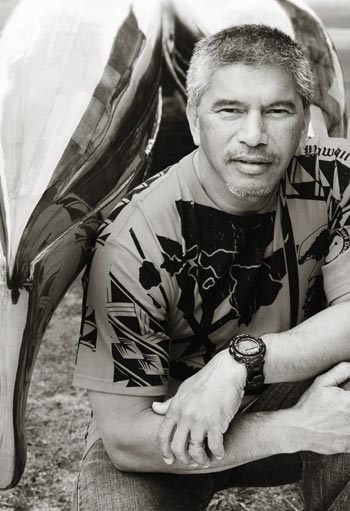 Iokepa Nae‘ole has just come in from leading kids on a three-day trip with Hawai‘i Outdoor Experience. “The kids canoe, do a ropes course, hikes, work trips, snorkels. This time we removed pines, worked on a boardwalk.”
Iokepa Nae‘ole has just come in from leading kids on a three-day trip with Hawai‘i Outdoor Experience. “The kids canoe, do a ropes course, hikes, work trips, snorkels. This time we removed pines, worked on a boardwalk.”
We are sitting in the Hawaiian Canoe Club building on Kahului Harbor, a place to which “Kepa” is connected by a long lifeline—his father was a member here when the club was a year old. As the sun begins to ease behind the West Maui Mountains, Kepa receives aloha hugs from a multiethnic, multiage group of salty paddlers.
In 1992, after ten years in the military, Kepa discovered his life’s work while teaching at the first ‘Aha Punana Leo, a private, Hawaiian-language-immersion school. “I found myself,” he says. “I found my culture. Language makes pictures in your head; when I hear ‘kupuna,’ I see that great tree that’s fallen down, given its all, now supporting the keiki [children].”
In 1995, Kepa joined The Nature Conservancy of Hawai‘i as an outreach education coordinator. While giving talks in the schools, he realized that the island’s youngsters were isolated from their own Hawaiian ecology. He helped write a curriculum to change that; today Ho‘ike O Haleakala is used in public and private schools throughout the state. And Kepa took kids camping and doing work trips. “I wanted to bring an awareness of the older styles of conservation, once so powerful, into our daily practices. It involves thinking about everything you do.”
Then he thought: Why aren’t our kids in local conservation professions? “I wanted to get high school kids out volunteering, open their eyes to careers in conservation. Kids in those programs are now working at the national parks and in watershed partnerships.”
While still with The Nature Conservancy, Kepa helped jump-start a program through Hui Malama Learning Center, teaching environmental science. Anchored at the Hawaiian Canoe Club, the program integrated culture, science, ecology, math, reading, and writing. “We have a classroom upstairs here at the clubhouse, but the beach and harbor were our classroom. We’d paddle out and snorkel around pier 1. The weather dictated how we’d do the day. In the classroom, whatever they wrote papers about, we would ask them to explain how those topics relate back to here, to home, to us.”
In 2008, Kepa helped launch Jean-Michel Cousteau’s Ambas-sadors of the Environment program at the Ritz-Carlton, Kapalua. Then ‘ohana (family) called him back. The Neighborhood Place of Wailuku, a family-strengthening organization for parents and youth, snapped him up. “Now I work with at-risk youth, using the environment as therapy.
“The first thing is to get them having fun; that’s when they connect to something like a honu [sea turtle] or a whale. When they ask a question I say, ‘I dunno, let’s go find out,’ and we go look together. We talk about what they’ve learned, how they feel about it, [how] to take their message to the leaders who need to hear it—that part is really exciting.”
Lights are coming on in the parking lot. Iokepa has family obligations, and also homework. He’s back in school, getting a psychology degree at the University of Hawai‘i’s Maui College, after which he’ll return to the Hawaiian-language-immersion schools. “What I really want to see happen is a revolution in our learning system, where the things I do are not extracurricular but are required curriculum.
“It’s a big circle, my jobs, and I’m fine with it because I bring with me everything I’ve accumulated when I get back to someplace I’ve been.”
—Judy Edwards
Hawaiian Canoe Club
(808) 893-2124
www.hawaiiancanoeclub.org
Lehn Huff—Cultivating Connections
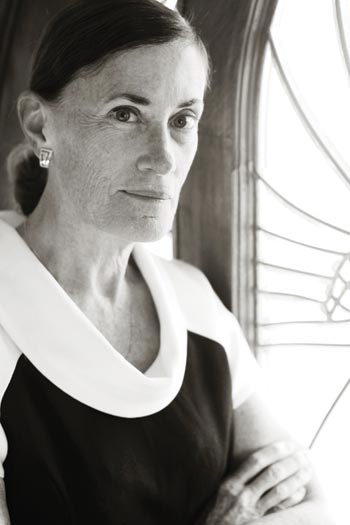 The dining-room table in Lehn Huff’s comfortable Ha‘iku home is covered with neat piles of paper. “This is my office,” she says, sitting down to talk about what she’s been doing since retiring as head of Seabury Hall Middle School in 2008. After thirty years at that venerable institution, Lehn wants to keep giving back.
The dining-room table in Lehn Huff’s comfortable Ha‘iku home is covered with neat piles of paper. “This is my office,” she says, sitting down to talk about what she’s been doing since retiring as head of Seabury Hall Middle School in 2008. After thirty years at that venerable institution, Lehn wants to keep giving back.
Lehn became involved with sustainability—she calls it “regeneration”—long before she left Seabury. She participated in the World Futures Society at the national level, the Hawai‘i 2050 Sustainability Plan at the state level, and the Focus Maui Nui project led by the Maui Economic Development Board at the county level.
“Now that I’m retired, I can pick my priorities,” she says. “I choose to put my energies into food security and nutrition.”
You can sense the urgency in her commitment. “We import 85 percent of our food, and have the highest rate of obesity and childhood-onset diabetes in the nation. We live in a year-round climate for growing fruits and vegetables. Something is wrong with this picture. Knowing children the way I do, having worked with them for thirty years, I simply cannot walk away from this cause.”
Lehn knew that some Maui County schools were introducing sustainability into their curricula. She began to identify those that had established “best practices”—schools that had active vermiculture bins, or grey-water systems, or teacher-designed greenhouses and compost makers, those that had started school gardens or were experimenting with “chicken tractors.”
“All they needed to know was what other schools were doing.”
Lehn developed the Maui School Garden Network roster “to help educators and administrators connect with one another and with a support system that understood the time constraints that teachers are under.” One year into the project, that network includes forty-two of the county’s fifty-three public and independent schools, and an impressive array of community organizations.
“The College of Tropical Agriculture at UH Maui College is providing gardener training programs and teacher resources,” says Lehn. “The Maui Economic Development Board conducts farm field trips and nutrition education. Community Work Day and regional sustainability groups lend their expertise and volunteer help. A few local restaurants have sponsored school gardens.”
With Lehn as its volunteer director, this nonprofit, community-based network hopes to establish gardens in every public and private school in Maui County—“living laboratories” that can help students from kindergarten through high school deepen their understanding of where food comes from, and how to grow and prepare it.
She notes the statistic—scary from the perspective of local sustainability—that the average Hawai‘i farmer is fifty-seven years old. “We can’t afford to lose our farmers. Yet young people view agriculture as too much work for too little income,” especially when it comes to supporting a family on islands with such a high cost of living. Lehn hopes the Maui School Garden Network will change this attitude.
“Starting in kindergarten, the children develop good nutritional habits, as well as the skills to grow their own food,” she says. “Children begin eating vegetables they never wanted to try, because they have grown them themselves. Increasing the demand for local foods results in more direct purchases from Hawai‘i farmers,” more opportunities for local agriculture.
Lehn practices what she preaches. An impressive garden lies beyond her kitchen door. Friends and visitors don’t depart without bags filled with crisp, just-picked vegetables or wonderful fruit from her citrus grove.
Maui School Garden Network
msgn@hawaii.rr.com
www.mauischoolgardennetwork.org
Walter Enomoto—Spokesman
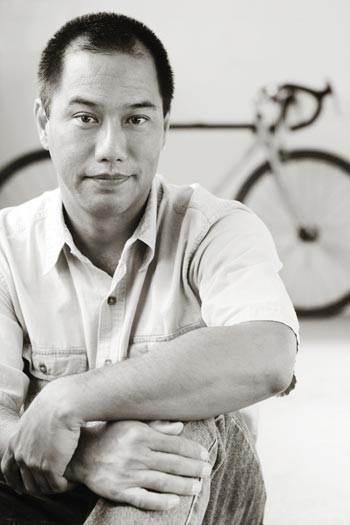 Like a lot of us, Walter Enomoto fell in love with bicycles as a kid. He never outgrew it.
Like a lot of us, Walter Enomoto fell in love with bicycles as a kid. He never outgrew it.
His day job is working as a sustainable-energy consultant, but for twenty years, Walter has volunteered his time to make Maui a safer place for those who practice pedal power.
“With the decline of oil, there are going to be substantial changes in transportation in the future,” he says. He cites the obvious financial advantages of using a bicycle instead of the family auto, and the ease with which bikes integrate with other forms of transportation, keeping more cars off the road.
“I give kudos to Don Medeiros, the previous county Department of Transportation director, for mandating that every new bus on Maui have bike racks,” he says. “Based on anecdotal evidence, they’re being well used. And since the spike in oil prices in 2008, we’re seeing more people using bicycles for transportation and commuting.”
It’s taken decades of advocacy to see those encouraging signs. Walter served as a member, and later co-chair, of the Mayor’s Bicycling Advisory Committee during Linda Lingle’s two mayoral terms, helping to revise the Maui County Code for cyclists, and advising on capital-improvement projects like the North Shore and Mokulele Highway Bike Paths.
Separated from cars and other large motorized vehicles by broad, grassy swaths, bike paths provide a safer environment for youngsters and less-experienced cyclists than do bike lanes along the shoulders of State and County roads.
“Today a lot of factors keep kids from going out to ride,” says Walter. “Our roadways are different; our driving habits have changed. When parents say, ‘I wouldn’t put my kid out there,’ I can see why. We’ve gone from being respectful motorists to ‘Get out of my way.’
“I see kids with their families on these bike paths. That’s where you want them to learn. Michele Obama talks about childhood obesity as a serious trend. If we create places where kids can bicycle, they’ll be healthier growing up.”
Among his many bike-related efforts, Walter volunteers as president of the Maui Bicycle Alliance, a grassroots advocacy group that works to promote bicycling for health, recreation, sport and transportation. “If there’s a road condition we think is hazardous, we’ll submit recommendations to the County and the State. We usually get a good response.”
Sometimes it’s not the road that’s the hazard. Downhill-bike tours can try the patience of Upcountry motorists whose daily commute slows to a crawl behind inexperienced and slow-moving cyclists who are dropped off at Haleakala’s summit to “bike down a volcano.”
“Cyclists who live and ride Upcountry have been involved in road-rage incidents created by the downhill-tour industry.” The Maui Bicycle Alliance was among the groups that pushed the County to fund a study to find permanent solutions. That study was recently completed, and the State and County are reviewing its short-term recommendations: widen shoulders, add staging areas for tour vans, and pullouts where cyclists can get safely off the road.
The Maui Bicycle Alliance partners with similar organizations around the Islands, lobbying the State for bicycle-friendly funding and legislation.
“I’m just a spoke in the wheel of bicycling advocacy,” says Walter. “Lots of people have helped over the years: legislators, doctors, lawyers . . . right down to unemployed and homeless people. Bicycling reaches all levels, and builds community. Bicycling itself is advocacy.”—Rita Goldman
Maui Bicycle Alliance
bikeguy@hawaiiantel.net


